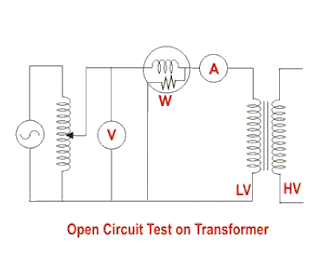Active And Passive Components in Electronics
Active and passive components form the two main types of electronic circuit elements. An active component supplies energy to an electric circuit, and hence has the ability to electrically control the flow of charge. A passive component can only receive energy, which it can either dissipate or absorb.
Types of Electronic Components
Electronic elements that make up a circuit are connected together by conductors to form a complete circuit. If these connecting conductors are ideal conductors (i.e. they have no resistance) then all parts of the circuit can be classified into two main categories depending on whether they deliver or absorb energy from the circuit:
- Active components
- Passive components
Electronic symbol s are used to represent both active and passive components. An example of a basic circuit made up of two electronic elements has been illustrated below:
Active Components
An active component is an electronic component which supplies energy to a circuit. Active elements have the ability to electrically control electron flow (i.e. the flow of charge). All electronic circuits must contain at least one active component.
Common examples of active components include:
- Voltage source
- Current sources
- Generator (such as alternator and DC generator)
- All different types of transistors (such as Bipolar junction TRANSISTORS, MOSFETS, FETs, and JFET)
- Diodes(such as zener diodes, and LEDs)
Voltage Sources
A voltage source is an example of an active component in a circuit. When current leaves from the positive terminal of the voltage source, energy is being supplied to the circuit. As per the definition of an active element, a bsttery can also be considered as an active element, as it continuously delivers energy to the circuit during discharging.
Current Sources
A current source is also considered an active component. The current supplied to the circuit by an ideal current source is independent of circuit voltage. As a current source is controlling the flow of charge in a circuit, it is classified as an active element.
Transistors
Although not as obvious as a current or voltage source – transistors are also an active circuit component. This is because transistors are able to amplify the power of a signal (see our article on transistor as an amplifier if you want to know exactly how).
As this amplification is essentially controlling the flow of charge – transistors are hence classified as an active component.
Passive Components
A passive component is an electronic component which can only receive energy, which it can either dissipate, absorb or store it in an electric field or a magnetic field. Passive elements do not need any form of electrical power to operate.
As the name ‘passive’ suggests – passive devices do not provide gain or amplification. Passive components cannot amplify, oscillate, or generate an electrical signal.
Common examples of passive components include:
Resistors
A resistor is taken as a passive element since it can not deliver any energy to a circuit. Instead resistors can only recieve energy which they can dissipate as heat as long as current flows through it.
Inductors
An indicator is also considered as passive element of circuit , because it can store energy in it as a magnetic field, and can deliver that energy to the circuit, but not in continuous basis. The energy absorbing and delivering capacity of an indutor is limited and transient in nature. That is why an inductor is taken as a passive element of a circuit.
Capacitors
A capacitor is considered as a passive element because it can store energy in it as electric field. The energy dealing capacity of a capacitor is limited and transient – it is not actually supplying energy, it is storing it for later use.
As such it is not considered an active component since no energy is being supplied or amplified.
Transformers
A transformer is also a passive electronic component. Although this can seem surprising since transformers are often used to raise voltage levels – remember that power is kept constant.
When transformers step up (or step down) voltage, power and energy remain the same on the primary and secondary side. As energy is not actually being amplified – a transformer is classified as a passive element.
Bilateral Elements
Conduction of current in both directions in a circuit element with same magnitude is termed as a bilateral circuit element. It offers some resistance to current flow in both directions.
Example - resistors, inductors, capacitor.
Unilateral Elements
The unilateral circuit element does not offer same resistance to the current of either direction. The resistance of the unilateral circuit element is different for forward current than that of reverse current.
Example- transistor, diode etc.
The figure above shows a diode as a unilateral circuit element. When diode is forward biased it offers very small resistance and conducts. While it is reverse biased, it offers very high resistance and doesn’t conduct. The circuit element can be categorized in another manner, such as lumped and distributed circuit elements.
Lumped Elements
When the voltage across and current through the element don’t vary with dimension of the element, it is called lumped circuit elements.
Examples: Resistor connected in any Electrical circuit
Distributed Elements
When the voltage across and current through the element change with dimensions of the element, it is called distributed circuit element.
Examples: Resistance of a transmission line. It varies with the length of the line.












No comments:
Post a Comment